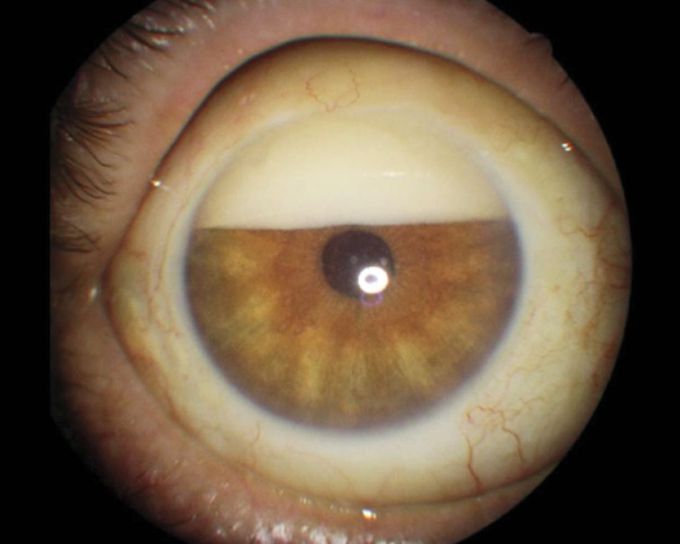


Hyperoleon
A 69-year-old man with type 2 diabetes mellitus presented to the ophthalmology clinic for a routine ocular examination. Three years earlier, he had undergone cataract surgery and vitrectomy of the right eye for a retinal detachment. Clinical examination of the right eye showed a white substance covering the upper third of the iris. Visual acuity was 20/400 in the right eye and 20/40 in the left eye. Slit-lamp examination of the right eye revealed mild corneal edema, as well as a layer of emulsified silicone oil in the superior anterior chamber, known as a hyperoleon, that moved slightly with tilting of the head. Pigmentary deposits covered the intraocular lens. The intraocular pressure was normal. The long-term use of silicone oil as an endotamponade in ocular surgery can result in complications associated with its emulsification and prolapse through anatomically compromised areas. The density of silicone oil is lower than that of aqueous humor, and therefore, it settles at the top of the anterior chamber. The silicone oil was surgically removed, and the patient’s visual acuity improved to 20/80 in the right eye. There was no recurrence of retinal detachment at a follow-up visit 6 months later.

